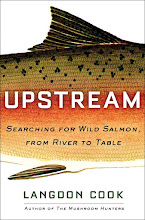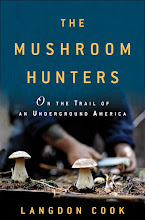
Warning: this is a wonky post, and while it might bore some readers, it also explains why mycology is an excellent discipline for the budding biologist. The study of mushrooms and other fungi is accelerating quickly now that we have genetic testing tools. There are huge strides to be made in simply categorizing mushrooms across North America. Many well-known species—well known by their common names, that is—still carry Latin names borrowed from their European look-alikes. For instance, I fully expect our many species of morels to go through radical changes in nomenclature in the not-too-distant future. Such work is exciting for scientists. Even more exciting: there are many species left to discover and name.
In the past couple weeks the mushroom pictured above has been fruiting all over western Washington. Commonly known as a shaggy parasol, it goes by the Latin name of Chlorophyllum olivieri, and apparently it's quite common in the PNW as the fall weather turns colder.
There are now three species of shaggy parasol that used to be lumped into a single species (in a different genus) called Lepiota rhacodes (also spelled rachodes). This species was moved from Lepiota to the Macrolepiota genus, and now, thanks to DNA sequencing, it resides in Chlorophyllum, where it's been split into three different species: Chlorophyllum rhacodes, Chlorophyllum brunneum, and Chlorophyllum olivieri. Interestingly, Chlorophyllum is home to the mushroom that poisons more people annually in North American than any other, Chlorophyllum molybdites, or green-spored parasol. Here's a quick overview of the naming musical chairs.
Though known as choice edibles, the shaggy parasols are viewed with suspicion. It may be that, as with Leccinums, a small percentage of the human population is allergic to them. Or there might be a culprit in the trio that is responsible for most of the poisonings. No one knows.
I've eaten parasols before without incident, so my plan is to saute these for a mushroom soup. You don't see them in the market much because they don't travel well. If you do come across an "edible" parasol for the first time, remember to sample a small bite to make sure you're not one of the few unlucky ones who becomes violently ill from this beautiful fungus. (Top photo by Damien Murphy.)
Monday, October 27, 2008
The Shaggy Parasol
Subscribe to:
Post Comments (Atom)






1 comment:
I've picked alot of what i assume are the olivieri shrooms; around puget sound theyre allways near conifers. I've found another kind around here that seems to prefer shorter green grass but havent tried it. A mycologist told me that the toxic molybites hasnt been found south of sanfrancisco.
Post a Comment